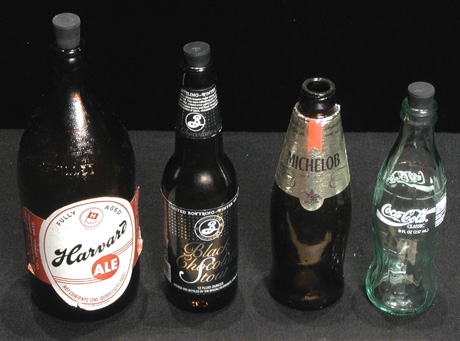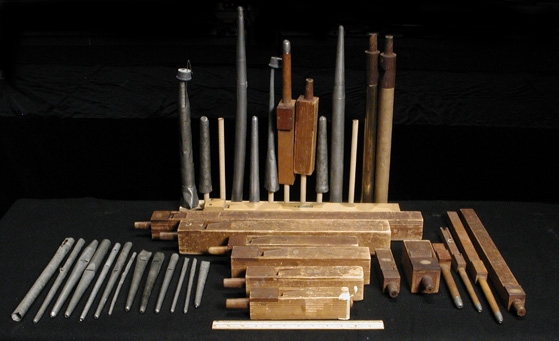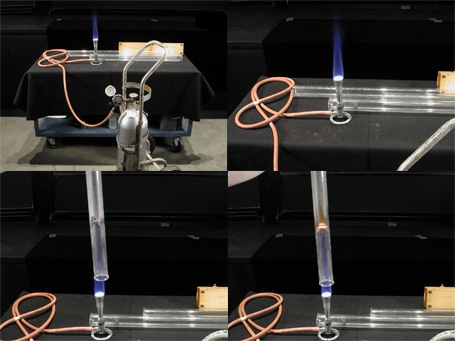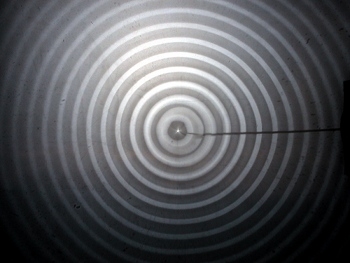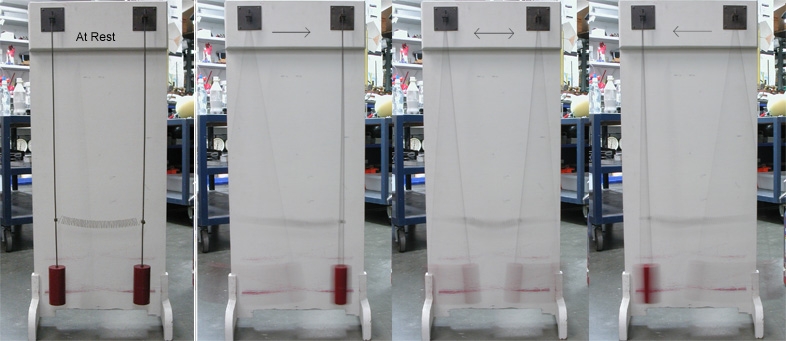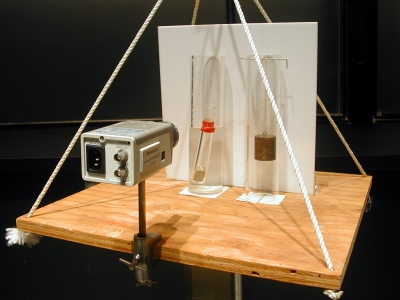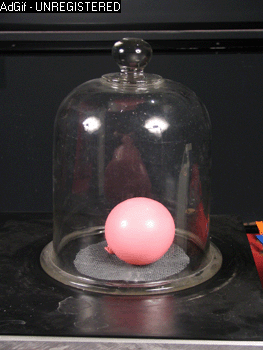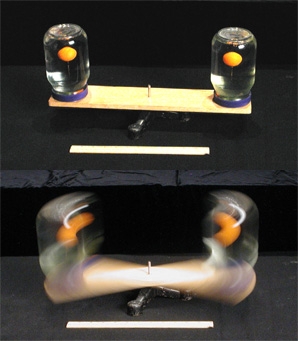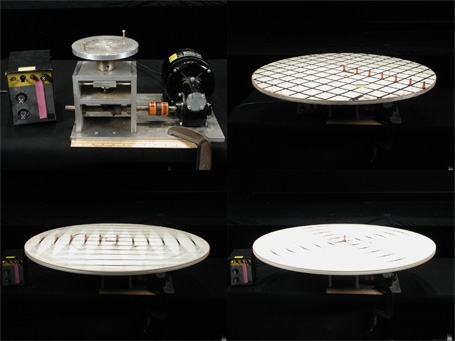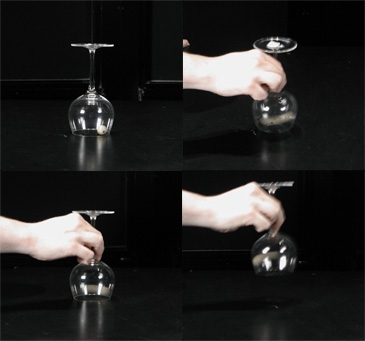Also known as the Ben Franklin pond experiment, after a story in B.F's autobiography.
Olive oil with a known volume is dropped onto water. The water has been dusted with lycopodium powder, which floats on the surface. The oil drop expands, pushing the powder aside to form a clear circle, until the oil forms a monolayer. Measuring the area of the monolayer, dividing the volume of the drop by that area, gives the thickness of the monolayer, which is the height of the oil molecule on water.
From our demonstration movie, we found these values. The size of the patch was 62 cm...
Read more about Molecular Size